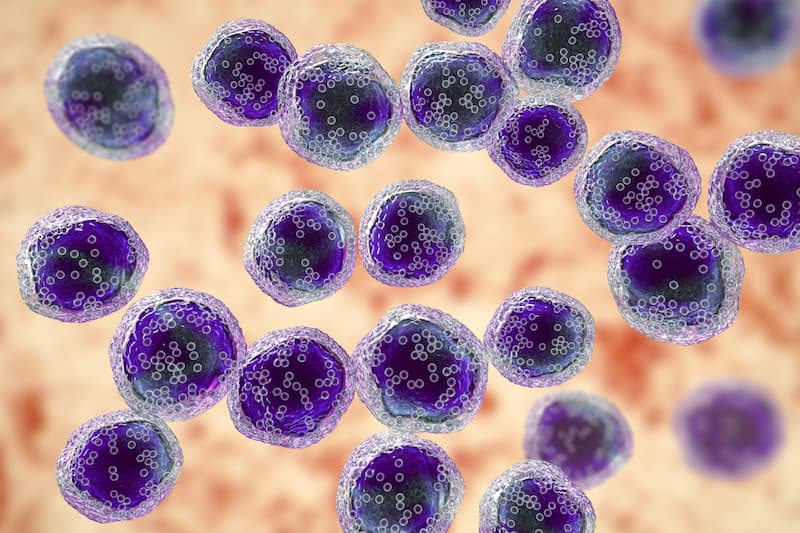COVID-19 and Chemotherapy Association Holds in Pediatric Leukemia/Lymphoma
Pediatric patients with acute lymphoblastic leukemia/lymphoma were less likely to have severe COVID-19 infection.
“The higher incidence in older children might be explained by the risk of exposure to [COVID-19] during school and social activities, whereas the higher risk in Hispanic children is not well understood but is consistent with the findings of other studies,” according to the study authors.

Although severe COVID-19 infection was rare for pediatric patients with acute lymphoblastic leukemia or acute lymphoblastic lymphoma, treatment specifically with chemotherapy was affected, according to findings from a study published in JAMA Open Network.
Of the 308 patients enrolled, 6% had severe disease that was associated with older age and higher white blood cell counts at diagnosis. One patient each experienced pulmonary embolism and cerebral venous sinus thrombosis. Reinfection was noted in 10% of patients and was associated with older age and receipt of standard high-risk vs low-risk therapy.
“There is no standardized approach to chemotherapy modification, which is commonly reported for patients with mild to moderate COVID-19 illness. Chemotherapy can be continued without adverse events, especially for patients in the lower-intensity treatment phases,” the study authors wrote.
Between March 30, 2020, and June 20, 2022, patients who were 1 to 18 years old and received therapy on the St Jude Total XVII protocol (NCT03117751) were included in the trial. Those who developed COVID-19 were compared with those who did not during the study period. Testing for COVID-19 infection occurred weekly through polymerase chain reaction testing with nasal swabs.
During the study period, 36% of patients tested positive for COVID-19 with a median age of 8.2 years. Of these patients, 62% were male, and 74% were White. When compared between those with an infection and those without, the median ages were 6.7 years vs 5.3 years. Those with an infection were more likely to be Hispanic or of unspecified ethnicity.
A total of 16% of patients were asymptomatic, and 6% had severe COVID-19. Additionally, 6 patients presented with disease before the Omicron variant was prevalent in the United States.
For those diagnosed with COVID-19, it was often during the maintenance phase of chemotherapy (92%). Patients typically had a cough (63%), fever (47%), or rhinorrhea (42%). Overall, 33% of patients were admitted to the hospital because of febrile neutropenia (15%), a fever with another symptom (15%), respiratory distress without fever (2.7%), or another complication (0.9%). Of note, 3.6% of patients required admission into an intensive care unit.
The median time to COVID-19 clearance was 31.5 days, and persistent positivity past 60-day follow-up occurred in 15% of patients.
Remdesivir (Veklury) was given to 10% of patients, and 3 patients with severe disease were given dexamethasone. Anticoagulation therapy was given to those with a median age of 14.8 years, those in earlier lines of therapy, and those who had severe infection.
The median age for severe COVID-19 was 15.7 years, 6.4 years for those with mild to moderate disease, and 5.9 years for those with asymptomatic/paucisymptomatic disease (P = .005). At diagnosis, a higher white blood cell count was noted in 57% with severe disease, 13% with mild or moderate, and 24% with asymptomatic/paucisymptomatic (P = .02).
Additionally, an older age at COVID-19 diagnosis was observed with a median age of 16.5 years for those with severe COVID-19, 8.2 years for mild to moderate, and 6.8 years for asymptomatic/paucisymptomatic (P = .009). A lower lymphocyte count was also observed with a median of 300/μL for severe disease, 470/μL for mild to moderate, and 600/μL for asymptomatic/paucisymptomatic (P .02).
During the observation period, no patients required mechanical ventilation, had multisystem inflammatory syndrome, or died. Within 21 days of COVID-19 diagnosis, 16 patients received asparaginase.
Until clinical improvement and/or completion of antiviral therapy, chemotherapy was held in 87% of patients. For those with severe disease, chemotherapy was held longer. In pre-Omicron vs post-Omicron periods, there was no difference in the frequency of chemotherapy (91% vs 82%; P = .09). The median duration of held chemotherapy was longer in the pre-Omicron period at 12 days vs post-Omicron at 7 days (P <.001).
The median time between reinfection was 8.8 months, and prior to this, all patients had negative COVID-19 tests. Severe disease was not noted during reinfection, and only 1 patient was given remdesivir. Remdesivir given during the first infection did not affect whether patients were re-infected. Of 11 patients who were re-infected, 9 had chemotherapy withheld, with a median total chemotherapy interruption of 22 days vs 8 days for those who were only infected once.
Overall, 46% of patients received a COVID-19 vaccine before available or indicated for their age. Before the first infection, 59 patients were eligible, and 19 received 1 or more doses. Parent refusal occurred with 5 patients, and 2 had medical contraindications reported in their documents. Of the 7 patients with severe infection, 4 were not eligible for the vaccine at the time of infection, and 3 were eligible but had not received a dose.
“The higher incidence in older children might be explained by the risk of exposure to [COVID-19] during school and social activities, whereas the higher risk in Hispanic children is not well understood but is consistent with the findings of other studies,” the authors concluded.
Reference
Hashmi SK, Bodea J, Patni T, et al. COVID-19 in pediatric patients with acute lymphoblastic leukemia or lymphoma. JAMA Netw Open. 2024;7(2):e2355727. Published 2024 Feb 5. doi:10.1001/jamanetworkopen.2023.55727
Navigating AE Management for Cellular Therapy Across Hematologic Cancers
A panel of clinical pharmacists discussed strategies for mitigating toxicities across different multiple myeloma, lymphoma, and leukemia populations.